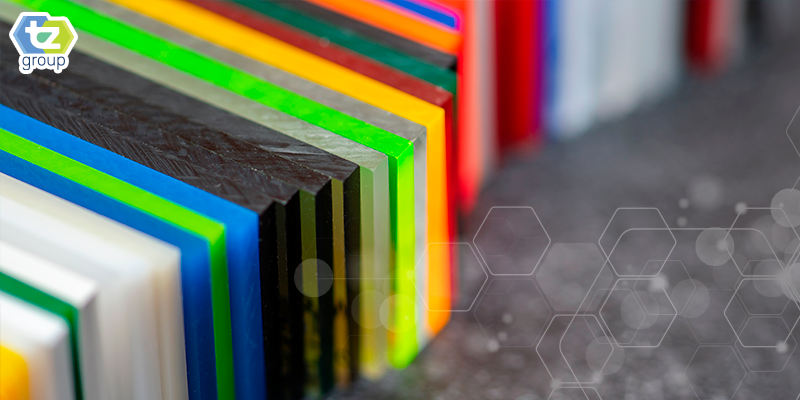Methyl methacrylate, better known as MMA, is an essential chemical in various industries, famous for its versatility and widespread applications. It serves mainly as a monomer in the synthesis of acrylic-based polymers, such as polymethyl methacrylate, or PMMA, Methyl methacrylate is integral to products ranging from shatter-resistant glass to automotive components.
For professionals looking for purchases and experts on supply chain management, grasping the properties, uses, and safe handling of methyl methacrylate is essential for informed decision-making. In this blog, we will delve into five key facts about MMA that every industrial professional should be aware of.
1. History of Methyl Methacrylate
Methyl methacrylate originated from acrylic chemistry, which began in the early 19th century. In 1843, acrylic acid was first synthesized by German chemists, marking a significant breakthrough. By 1865, methacrylic acid had been discovered, and through the addition of methanol, MMA was produced. This new chemical reaction led to the development of polymethyl methacrylate, or PMMA, a clear, durable plastic used in shatter-resistant glass and acrylic panels.
It wasn’t until the 1930s that MMA saw large-scale commercial use. Advancements in polymerization techniques allowed for the use of methyl methacrylate in various industrial applications. Companies began mass-producing PMMA, marking its significance in sectors like construction, automotive, and signage. Its demand surged during World War II as it replaced glass in aircraft canopies and military applications.
2. The Essentials of Methyl Methacrylate
MMA is an organic compound with the chemical formula C5H8O2. It’s a colorless, flammable liquid that polymerizes easily, making it an essential building block for numerous polymers, particularly PMMA. Methyl methacrylate produces polymers with excellent transparency, strength, UV resistance, and durability. With a boiling point of 101°C and a melting point of -48°C, it’s suitable for various industrial applications.
Methyl methacrylate is widely used in the production of acrylic plastics, coatings, and adhesives. It is a primary ingredient in the manufacturing of:
- Acrylic sheets: Safety glazing, signage, and light displays
- Automotive components: Vehicle lighting and interior parts
- Construction materials: Weather-resistant coatings and adhesives
- Medical technologies: PMMA, derived from MMA, is used in bone cement and dental materials
3. How Does MMA Transform from Liquid to Solid
Polymerization is the chemical reaction in which methyl methacrylate monomers link to form long chains, creating materials like polymethyl methacrylate. Liquid monomers can be turned into solid polymers, primarily through free radical polymerization. In this process, an initiator, often an organic peroxide, triggers the polymerization reaction, causing MMA molecules to link and form a solid, transparent plastic.
The polymerization process of MMA is affected by several factors:
- Higher temperatures can accelerate the reaction, while lower temperatures may slow it down
- The presence of initiators is crucial, as these substances play a vital role in initiating the polymerization process
- The ratio of MMA to other monomers during copolymerization is crucial in determining the polymer’s characteristics
4. What’s Inside a Methyl Methacrylate Emulsion
An emulsion is a mixture where one liquid, in this case MMA, is dispersed in another liquid, usually water, forming a stable mixture with the help of surfactants. Methyl methacrylate emulsions are widely used in industrial coatings, adhesives, and paints due to their low environmental impact compared to solvent-based systems. They typically consist of:
- MMA monomers: The core component that polymerizes upon application
- Water: The continuous phase in which MMA is dispersed
- Surfactants: Chemicals that stabilize the emulsion, preventing the MMA droplets from coalescing
- Initiators: Added to trigger the polymerization process during or after application
MMA emulsions are favored in sectors where low volatile organic compounds emissions are essential, such as in environmentally friendly coatings for construction and automotive industries.
5. Safety and Handling for MMA
Methyl methacrylate is classified as a hazardous substance due to its flammability and potential health risks. Direct exposure to MMA vapors or liquid can cause irritation of the eyes, skin, nose, and throat. High concentrations can lead to more severe health issues such as headaches, dizziness, or even respiratory failure in extreme cases. MMA is also a skin sensitizer, meaning that repeated contact can cause allergic reactions.
Because Methyl methacrylate is hazardous, handling it safely is crucial. The following safety measures are recommended based on guidelines from organizations like the Occupational Safety and Health Administration (OSHA) and the National Institute for Occupational Safety and Health (NIOSH):
- Workers handling MMA should wear personal protective equipment (PPE) chemical-resistant gloves, safety goggles, face shields, and protective clothing to minimize skin and eye exposure.
- Methyl methacrylate vapors can be flammable and harmful if inhaled. Proper ventilation in storage and working areas is essential to prevent vapor accumulation. This can include local exhaust systems or chemical fume hoods.
- MMA should be stored in a cool, dry, well-ventilated area away from heat sources and direct sunlight. Containers should be tightly sealed to prevent leakage, and MMA should always be stored with a stabilizer to prevent uncontrolled polymerization .
- In case of a spill, personnel should evacuate the area and follow proper emergency procedures, such as using absorbent materials to contain the spill and ensuring proper disposal according to hazardous waste regulations .
How TZ Group Can Enhance Your Industrial Solutions with Methyl Methacrylate
Methyl methacrylate is a versatile and essential monomer used in producing high-performance polymers such as PMMA. Its applications span across industries, from automotive components to construction materials and medical devices. However, it is equally important to understand the safety protocols required when handling this hazardous material.
For professionals looking to secure a reliable supply of methyl methacrylate, at TZ Group, we offer you high-quality, competitively priced MMA and other industrial chemicals. Contact us today to learn how we can support your business with safe and timely deliveries of methyl methacrylate and other essential materials. You’ll find the key facts to ensure your next project meets the highest standards of quality and safety with us.


